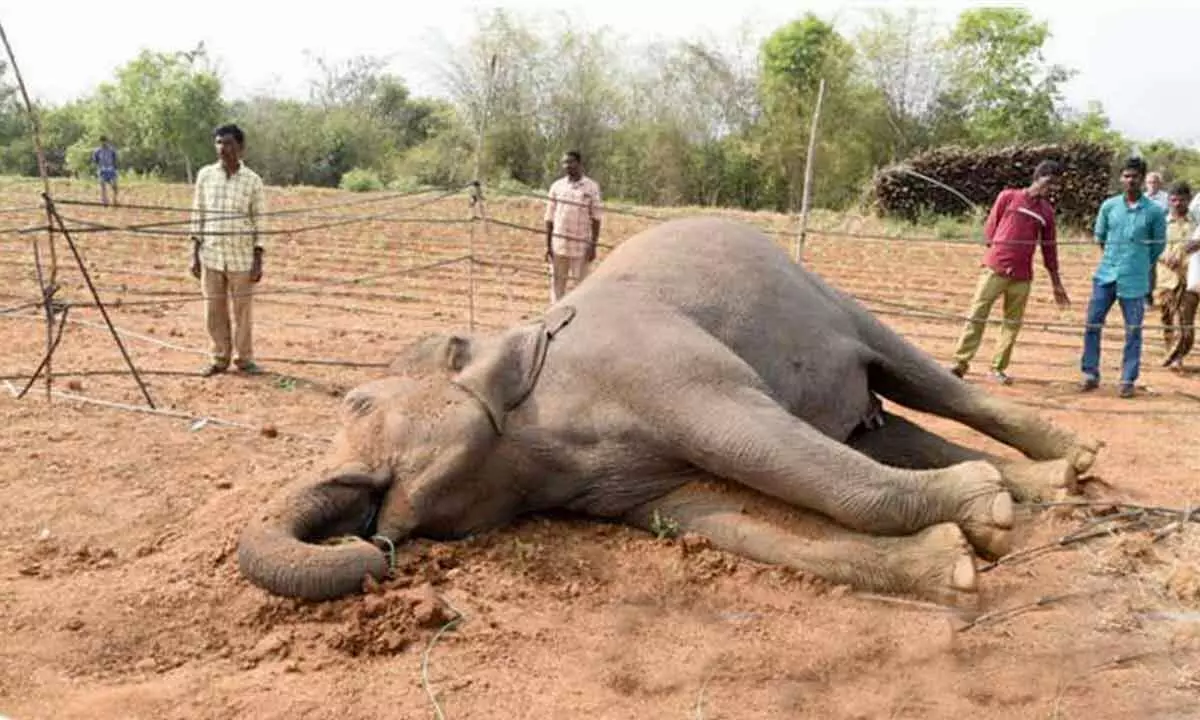Live
- New Criminal Laws: An Era of Transformation of the Criminal Justice System
- India among top 10 countries with AI readiness: Report
- UNICEF to support Kerala's children with special needs
- Meta purges over 2 million accounts linked to scam centres
- Mumbai, Delhi ranked among top 5 prime residential markets in Asia-Pacific
- Russia provided North Korea with anti-air missiles in exchange for troop deployment
- PCB appoints Azhar Ali as head of youth development
- Deepam-2 Scheme Reaches 5 Million Beneficiaries in Three Weeks, says Nadendla Manohar
- Will RG Kar tragedy impact Bengal bypoll results?
- BGT 2024:25: Josh Hazlewood picks four as Australia bundle out India for 150
Just In
Young elephant’s death highlights growing wildlife crisis


For representational purpose only
- About 46 elephant deaths were recorded since 2010 in the erstwhile Chittoor district
- Recent elephant census reveal the existence of about 90-110 resident animals in district’s forest areas
- Conservationists express deep concerns over the future of elephant population and want protection measures
Tirupati: The recent death of a young elephant near Pulibonupalle in Yerravaripalem mandal has intensified concerns over the escalating challenges facing wildlife in Andhra Pradesh's forests. The incident occurred in an area adjacent to Talakona forest, a region increasingly troubled by human-animal conflicts and the difficult conditions wild elephants endure.
Forest officials discovered the carcass of the approximately six-year-old elephant on Sunday morning, four days after its death. While the exact cause of death is under investigation, officials suspect illness or electrocution. This marks the second such incident in the region, following the earlier death of a young elephant after consuming a homemade bomb.
Koundinya Wildlife Sanctuary, the only significant habitat for Asiatic elephants in Andhra Pradesh, has become a focal point of concern for conservationists, government officials and local communities. Established in 1990 following the migration of elephants from neighbouring states, the sanctuary is now grappling with multiple threats, including human encroachment, deforestation and insufficient resources for the animals. A recent synchronised elephant census in Chittoor district's forest areas estimated the current elephant population to be between 90 and 110 resident animals, with an additional equivalent number of migrants. However, this population is under significant threat, with about 46 elephant deaths recorded in the erstwhile Chittoor district since 2010.
The causes of these deaths vary, many linked directly to human activities. Electrocution from low-hanging power lines and unprotected transformers is a major concern, with multiple incidents reported annually. Other causes include drownings, falls into wells and collisions with vehicles and trains. In 2019 alone, eight elephants died on railway tracks near the Tamil Nadu-Andhra Pradesh border.
Forest officials have identified several factors contributing to the human-elephant conflict. Insufficient fodder within the sanctuary, due to overgrazing by livestock, has driven elephants to seek food in nearby villages, where crops like sugarcane, sorghum and ragi attract them. Additionally, illegal wood collection and poaching continue to threaten the forest ecosystem.Conservationists remain deeply concerned about the future of the elephant population in the state. The ongoing loss of these rare animals underscores the urgent need for more comprehensive and effective wildlife protection measures.

© 2024 Hyderabad Media House Limited/The Hans India. All rights reserved. Powered by hocalwire.com






